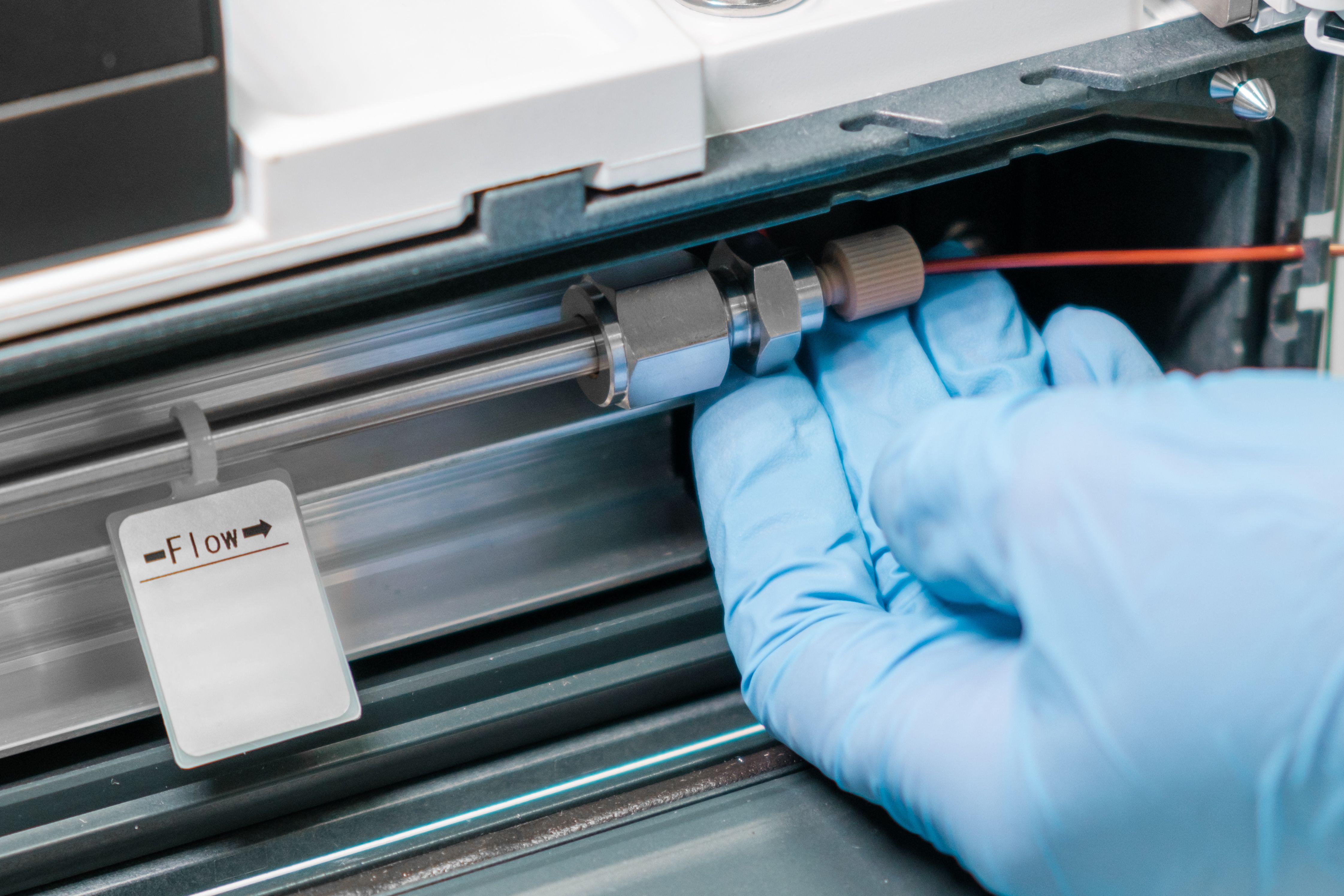Enhancing High-Throughput HPLC Methods for Small-Molecule Drug Discovery Using Superficially Porous Particle Technology
Superficially porous particle (SPP) column technology is leveraged to optimize high-throughput HPLC methods for small-molecule drug discovery, resulting in improved efficiency and reduced runtime.
Exploring ways to improve the efficiency of high-throughput analysis in small-molecule drug discovery, researchers at Biocon Bristol-Myers Squibb R&D Center (BBRC) in Bangalore, India, have harnessed the potential of superficially porous particle (SPP) column technology in combination with traditional high performance liquid chromatography (HPLC) systems. The study, published in Chromatographia, was led by Khemraj Bairwa and Amrita Roy, and aimed to reduce runtime without compromising analysis quality (1).
Close up scientist changing a column in HPLC system. Analytical chemistry laboratory. Preparation before analysis. | Image Credit: © vladim_ka - stock.adobe.com

SPP columns have a solid core surrounded by a thin, porous layer. This design provides advantages such as improved efficiency, enhanced separation capabilities, and reduced backpressure. The thin porous layer increases the surface area available for analyte interactions, allowing for faster mass transfer and shorter analysis times. The reduced particle size and narrow particle size distribution of SPP columns contribute to improved peak shapes and resolution. Overall, SPP columns offer a promising solution for achieving higher throughput and increased efficiency in HPLC analysis.
SPP columns have gained popularity due to their superior performance compared to fully porous particle (FPP) columns. However, their full potential had not been effectively explored in traditional HPLC methods. By optimizing the experimental parameters such as flow rate, gradient time, and photodiode array (PDA) detector acquisition rate, the researchers demonstrated the effectiveness of SPP column technology.
Two SPP columns, namely Kinetex EVO C18 and Accucore C18, were employed in the study. The optimized method exhibited remarkable improvements compared to the regular method. The SPP column achieved enhanced peak capacity, peak symmetry, theoretical plate numbers, and peak resolution, all within a significantly reduced runtime of just 7 minutes.
The results showcased a 50% reduction in runtime and approximately 31% net organic solvent savings, demonstrating an eco-friendlier approach to method development. The combination of SPP column technology and optimized parameters provided a greener and more efficient solution for high-throughput HPLC analysis in small-molecule drug discovery.
The study highlights the potential of SPP column technology to enhance the performance of HPLC methods, offering researchers in the pharmaceutical industry an efficient and sustainable approach for drug discovery. The utilization of SPP columns not only improves analysis efficiency but also contributes to a more environmentally conscious laboratory practice by reducing solvent consumption. The findings of this study serve as a foundation for future advancements in chromatographic techniques, ultimately benefiting the pharmaceutical industry and its pursuit of innovative therapies.
Reference
(1) Tellakula, N.; Guna, M.; Das, M.; Bane, V.; Chauthe, S. K.; Mathur, A.; Bagadi, M.; Bairwa, K. Roy, A. Leveraging Superficially Porous Particle Technology to Develop High-Throughput HPLC Methods for Small-Molecule Drug Discovery. Chromatographia 2023. DOI: https://doi.org/10.1007/s10337-023-04259-y
Study Explores Thin-Film Extraction of Biogenic Amines via HPLC-MS/MS
March 27th 2025Scientists from Tabriz University and the University of Tabriz explored cellulose acetate-UiO-66-COOH as an affordable coating sorbent for thin film extraction of biogenic amines from cheese and alcohol-free beverages using HPLC-MS/MS.
Quantifying Microplastics in Meconium Samples Using Pyrolysis–GC-MS
March 26th 2025Using pyrolysis-gas chromatography and mass spectrometry, scientists from Fudan University and the Putuo District Center for Disease Control and Prevention detected and quantified microplastics in newborn stool samples.






